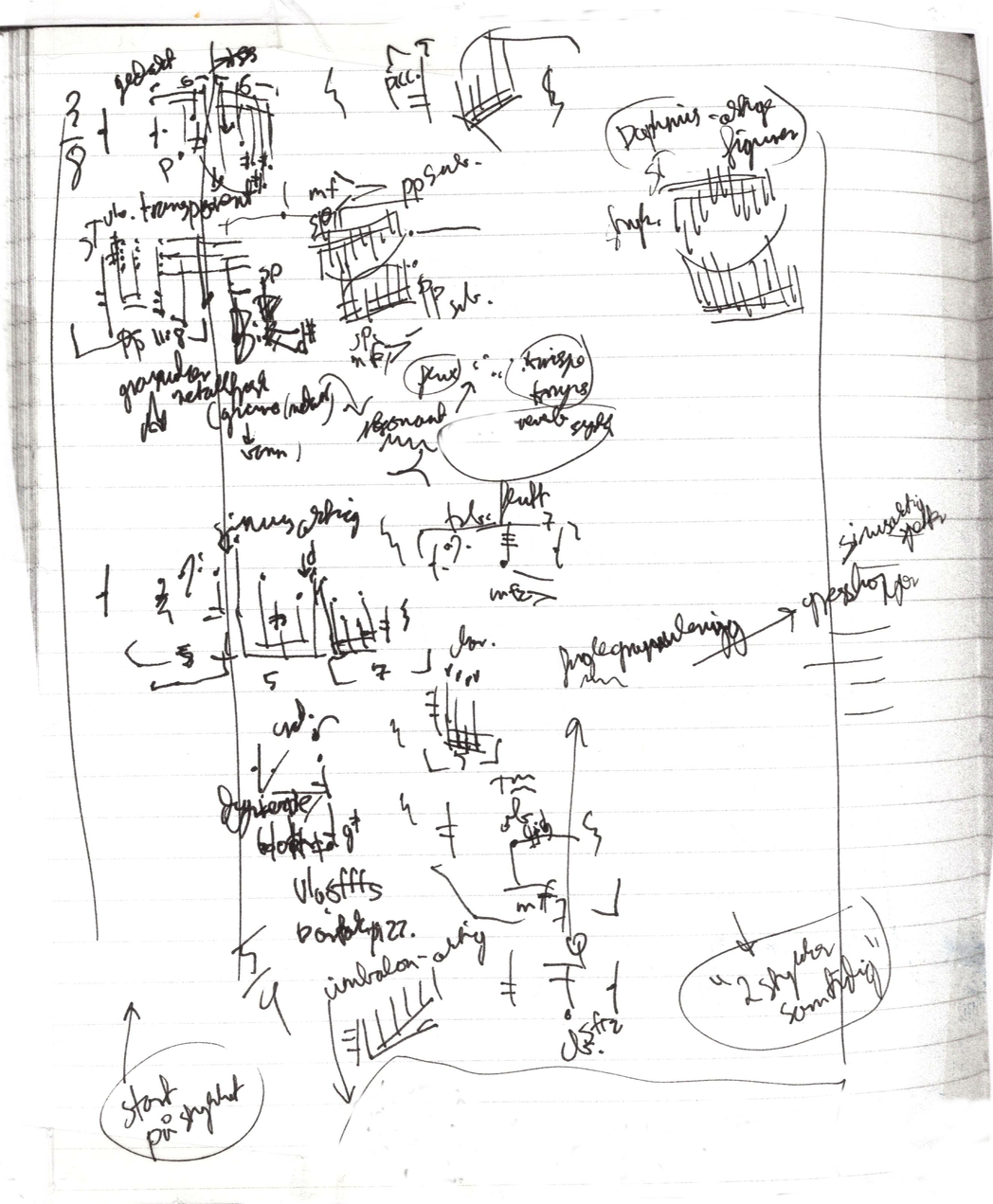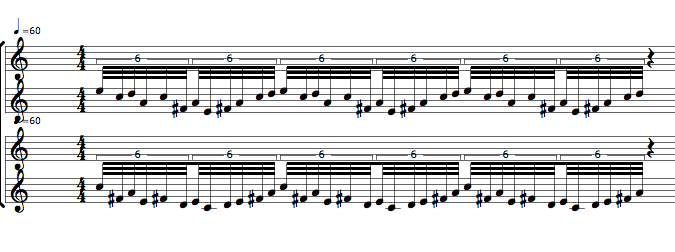Landscape with figures II
Ensemble fragment
Ensemble fragment 1 was sketched early on and thought as a possible beginning of the work, a condensed sculpture exposing many timbral and gestural qualities to come.
AA Ensemble fragment1
The sketch suggested a quotation from Ravel's Daphnis et Chloe. The flute figures in the first measure of Lever du Jour are arpeggiations on a D9 chord.
Helmut Lachenmann used textures of Lever du jour as an example of 'Fluktuationsklang'.[1]
"Die Wirkung bleibt dabei nach wie vor diejenige eines Zustandes; seine characteristische Eigenzeit kommt zwar zur Geltung, hat aber mit der effektiven Dauer des Klanges selbst nichts mehr zu tun." [2]
Salvatore Sciarrino shows this score side by side with stair patterns of the ancient bath in Vijayanagara, as examples of figural archetypes.
"However, when I hear that this is a descriptive piece, I have to laugh. But can you imagine a stream that swells like the ocean? Rather, its enormous waves are modeled on the passion of the protagonists who find themselves."[3]
A shorter excerpt could isolate the texture as a 'sound object' to be distorted.
Parts were pitch shifted and time scaled in four different versions. Pitch shifting inverted the melodic directions and introduced microtonal distortions. A slight difference of time scalingintroduced polyrhythmsinstead of rhythmic syncronization. This transformation could be considered a type of 'morphing' of music.
Pitchshifted Ravel versions
I chose the fourth version, performed by violins in the last measure before the grasshopper fermata take over. The viola is vaguely paraphrasing Ravel's original bass line through tremolo and glissando.
[3] "Tuttavia, quando sento dire che questo è un brano descrittivo, mi viene da ridere. Ma vi immaginate un ruscello che si gonfia come il mare? Piuttosto le sue onde spropositate sono modellate sulla passione dei protagonisti che si ritrovano." Sciarrino, 1998, Le figure della musica da Beethoven a oggi, p. 56.







